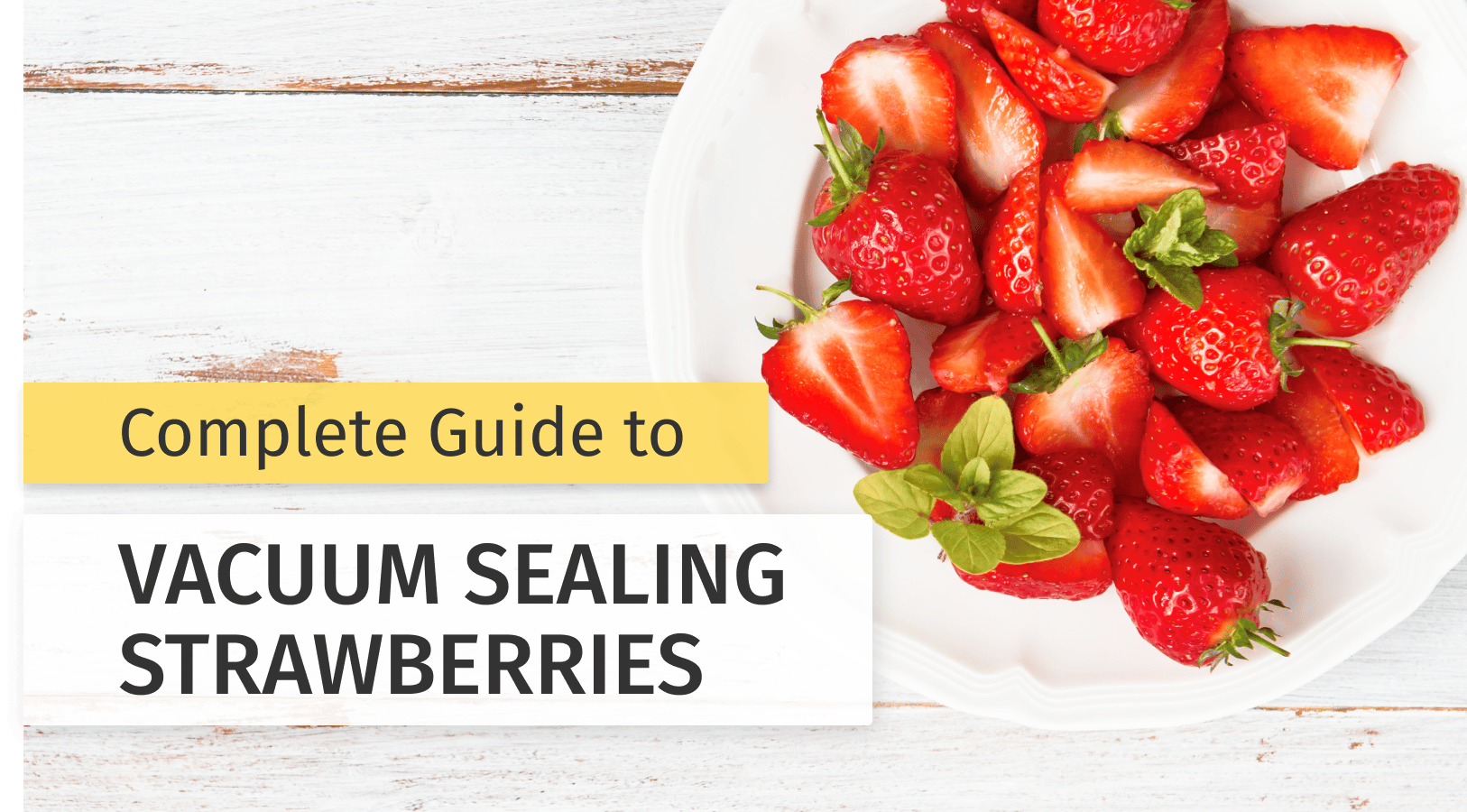One common question I get when I talk about the benefits of vacuum sealing is that “why would I consider vacuum sealing food when I can just store them in a plastic bag?”
This is a usual query people ask me when looking for ways to preserve the freshness of products. Some may think that they can make do with other methods.
I said it before, but I’ll say it again. When sealing your food products, it is very beneficial to use a vacuum sealer. Especially for fresh fruits and vegetables. This way, they are free from harmful elements or contamination. It also ensures that food lasts longer and avoids early spoilage.
Sure. It is a common experience that if we bring home a box of strawberries, we may feel like just closing the box it came in after we take out a piece or two. Or, others just use plastic bags and put them in the fridge.
These seem to be reasonable ways to store fresh produce in the fridge. But how much of that freshness do they keep?
Before we go ahead to know further why vacuum sealing is a much better alternative in storing strawberries, first, let’s recall what exactly is vacuum sealing.
What is Vacuum Sealing?
Vacuum sealing in simple terms is a method of packaging that removes air from the package before it is sealed. This method involves placing items in a plastic film package, removing air from inside, and sealing the package.
The invention of Vacuum sealer machines is a recent innovation in food-related technology. Today, it has become an important part of the food processing industry and helps reduce the problem of food wastage – a major benefit of vacuum sealing.
As a family man, I know that there are many sealing techniques that exist out there. But, I can attest that using a vacuum sealer machine is the most effective way to store and preserve food.
Sometimes, it may seem like your food is still fresh. But it’s impossible to see the bacteria that thrive on stored food due to contamination. In our household, we always put emphasis on cleanliness. That’s why we make sure that every food product we store in the fridge is properly sealed.
Aside from hygiene, one of the reasons why we opt on using vacuum sealers is due to our bad experiences with freezer-burned foods. Foods frozen for extended periods are at high risk of getting freezer burned. This will significantly reduce the products' quality even after just a couple of days you bought them.
The Know-How on Vacuum Sealing Strawberries
Speaking of the sealing techniques, it is likely for moist foods to get freezer burned. This is due to the moisture content they have. And out of all these foods, strawberries are a treat that should be sealed using a food vacuum sealer. I’ll tell you why.
These juicy delights are concentrated with moisture, which explains why they taste so refreshing. In fact, they’re my daughters’ favorite fruit. That is mainly why we need to keep lots of stock at home.
It is undeniable that strawberries can go bad quickly even if you put them in the fridge. So as a family who love strawberries, we needed to find a better storage alternative. Out of all the methods we tried, vacuum sealing offered the best result.
I will be sharing how I exactly do the entire strawberry vacuum sealing process. This way, you can better enjoy this refreshing fruit while saving yourself from possible contamination and spoilage.
Here are the exact things I do:
Step 1:
The first step when vacuum sealing any food is to clean it thoroughly. This applies to strawberries as well. After all, you don’t want to end up preserving the bacteria on your fresh strawberries.
Preferably, you should rinse them thoroughly before placing them in a tray lined with tissue. This helps dry the fruit before you put them in a vacuum-sealing bag.
Step 2:
After cleaning and drying them, it is now time to remove the stems. An efficient and quick way to do this is to make a small incision at the top of each strawberry.
Not only does this make the process easier, but it also keeps them from popping after the sealing process sucks up the air.
Step 3:
Put the fruit in one by one and make sure that no rotten ones are included.
Step 4:
Once they're in the bag and the vacuum sealer is ready, you may now turn on the machine. The vacuum sealer sucks the air and allows some air to escape the bag.
Step 5:
After the vacuum sealing process is completed put the vacuum-sealed fruits in the fridge right away.
TakeawayAs technology has improved, kitchen appliances have allowed greater convenience. I noticed that recently released vacuum sealers are becoming more focused on giving a user-friendly experience at the most accessible cost. Anyone can now seal their food instantly at home.
Aside from being used at home, many grocery stores also use vacuum sealers to pack certain products. Now, they do not have to worry about fruits going bad so quickly.
All in all, it is safe to say that getting a vacuum sealer is most definitely a smart choice if you love storing food at home.
Check out some of the best vacuum sealing products in the market at https://outofair.com.
 Vacuum Sealer Bags & Rolls for Food Savers (Free Shipping)
Vacuum Sealer Bags & Rolls for Food Savers (Free Shipping)



Share this article: